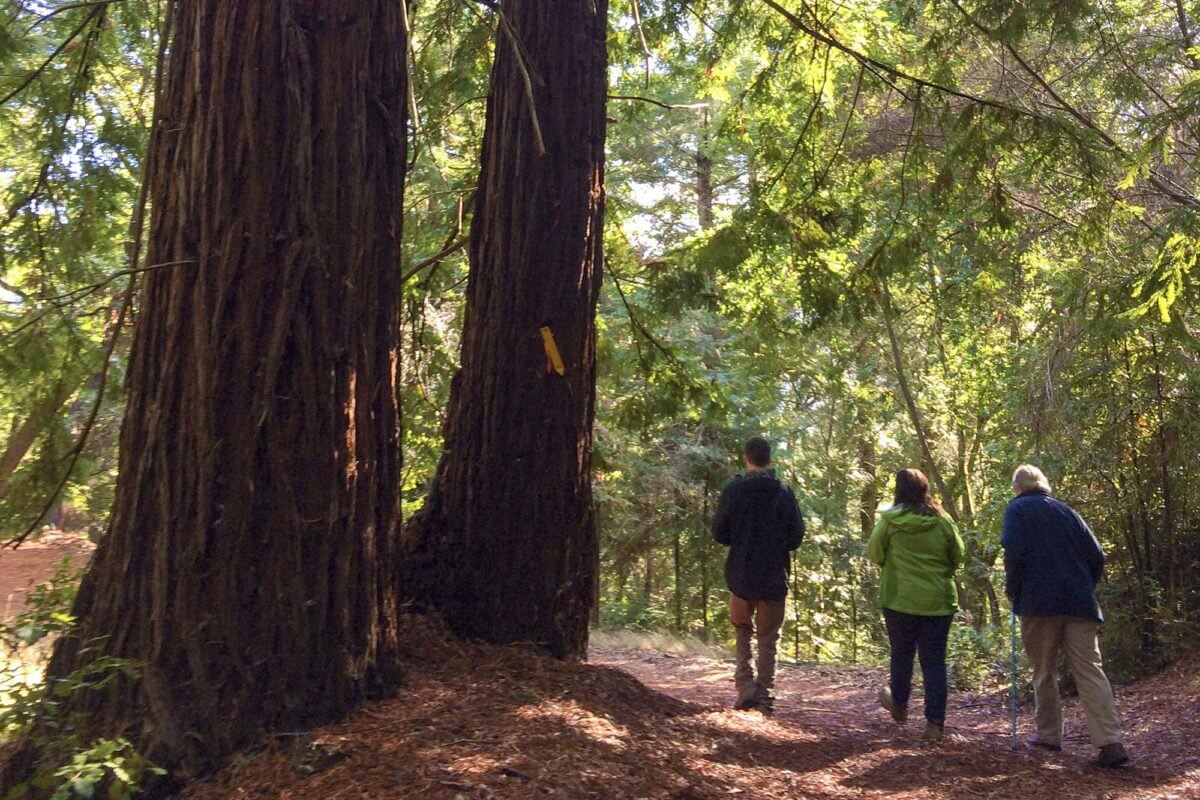Sempervirens Fund Protects 50 Acres of Redwood Forest Next to Castle Rock State Park and the Skyline-to-the-Sea Trail
One More Piece Secured in the Castle Rock Protection Puzzle

Walking through 50 acres of newly protected redwoods. Photo by Laura McLendon/SVF
December 8th, 2018 – Sempervirens Fund has purchased the Castle Rock West property in the Santa Cruz Mountains—50 acres of coast redwood forest located along Highway 9 in Santa Cruz County next to Castle Rock State Park and the Skyline-to-the-Sea Trail. The property includes a headwaters tributary of the San Lorenzo River and was one of the last unprotected inholdings of Castle Rock.
Purchasing the Castle Rock West property protects it from development and saves redwood forest habitat that supports rare species such as the San Francisco Dusky-footed woodrat, pileated woodpecker, and Santa Cruz black salamander. Mountain lions have also been documented near the property by the UCSC Puma Project. Sempervirens Fund’s scientific data indicates that, due to its north-facing slopes and riparian areas with cooler microclimates, this area could provide a future climate change refugia for many species. Climate change refugia are locations that will likely experience less change that the surrounding landscape.
“Having intact redwood forests is critically important for healthy wildlife and watersheds, and we are thrilled to protect another piece of the puzzle in the Castle Rock conservation story,” said Sara Barth, Sempervirens Fund Executive Director. “It’s especially sweet protecting this property during the 50th anniversary of Castle Rock State Park.” Sempervirens Fund was instrumental in helping start Castle Rock State Park in 1968 at 566 acres and has contributed over 4,000 acres helping to grow the park to its current size of over 5,200 acres and 34 miles of trails.
The property is located just north of the Waterman Gap campground, an important stopover for backpackers along the 31-mile Skyline-to-the-Sea Trail. This trail, created by Sempervirens Fund in 1976, journeys through Castle Rock and Big Basin state parks. Since the property lies within the natural watershed boundary of Castle Rock State Park and contains this important trail it is likely to become part of the park in the future. It could even provide some additional camping or picnicking sites, but a feasibility study needs to be done first.
Covered predominantly with large second-growth redwoods, the Castle Rock West property also has historic evidence of circa-1900 clearcutting in the form of old-growth redwood stumps with notches indicating the springboard logging technique of the times. This property’s protection is funded in part by the Gordon and Betty Moore Foundation. Sempervirens Fund now must raise additional funds to take care of the property and its natural habitat and ensure its protection forever.